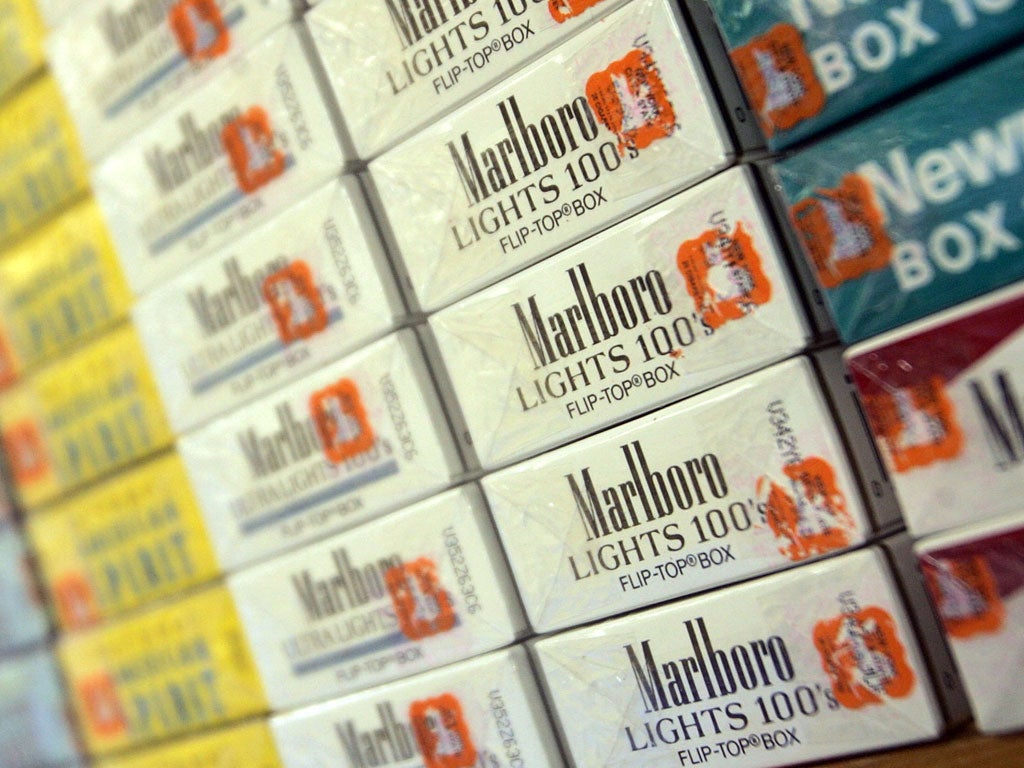Tobacco firms 'misled' public about additives
Cigarette giant Philip Morris 'obscured' evidence of toxicity, claims new report

The tobacco industry is accused today of misleading smokers over the safety of additives in cigarettes.
Based on a new analysis of data used by the US cigarette manufacturer Philip Morris a decade ago, which found the additives were safe, University of California researchers claim the firm's research "obscured findings of toxicity".
The original study by Philip Morris, called Project Mix, resulted in the publication of four papers in a scientific journal that concluded there was "no evidence of substantial toxicity" associated with the additives studied.
More than 300 additives are used in the manufacture of cigarettes to enhance their taste and make smoking smoother and more enjoyable.
The new study, by the Centre for Tobacco Control Research at the University of California, was based on the same data extracted from among 60 million documents released after litigation.
The researchers claim the original studies "cannot be taken at face value" and failed to reveal additives' dangers.
When they conducted their own analysis examining the additives per cigarette – as specified in the original protocol for the Project Mix study but later changed – they found the level of 15 carcinogenic chemicals increased by an average of 20 per cent.
They also discovered that, for what they call "unexplained reasons", Philip Morris had de-emphasised 19 of the 51 chemicals tested in the presentation of their results, including nine that were substantially increased in the smoke on a per cigarette basis.
Stanton Glantz, who led the new research published in the online journal Public Library of Science Medicine, said tobacco firms had spent decades preparing for the implementation of tougher regulation of their products, including the regulation of additives.
The use of additives had worried the World Health Organisation, the US Food and Drug Administration and national regulatory bodies in the UK and around the world. Philip Morris had used the four papers published in Food and Chemical Toxicology in 2002 to defend their inclusion in cigarettes.
When millions of internal company documents from the tobacco industry were released it enabled Dr Glantz and colleagues to reanalyse the data.
He said: "Putting additives in cigarettes increases the amount of fine particles and this is a bad thing because it increases the inflammatory response.
"If you take [Philip Morris's] own data and interpret it correctly, you could use this data to ban these additives."
A Philip Morris spokesman said: "We believe that the points raised in this recent paper by Stanton Glantz and others do not invalidate the findings of the Project Mix studies.
"All the Project Mix studies were reported alongside the actual data in four peer-reviewed scientific publications in 2002 and their way of calculation was discussed in one of the papers.
"The studies were performed according to well-established principles and standard toxicological guidelines."
In the mix: Added chemicals
Additives are used in cigarettes to mitigate the harshness of tobacco smoke and make the experience of smoking more pleasant.
Sugar is often added in the form of glucose, honey and molasses. Flavourings and spices can be added for the same reason, including benzaldehyde, menthol and vanillin or cinnamon, ginger and mint. Others used are orange oil or licorice extract. The most common are menthol, cocoa and glycerol.
Other unusual substances, not mentioned in this particular study but often added to cigarettes, include vinegar and pimenta leaf oil, which is used in non-alcoholic beverages and ice cream.
Join our commenting forum
Join thought-provoking conversations, follow other Independent readers and see their replies
Comments